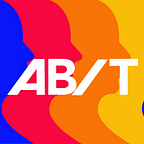Herding and the Dot-Com Trap
Written by Rhea Hajarnavis (UG 23)
In the 1990s, the Internet took the US by storm. Along with a significant rise in the number of Internet users, numerous Internet startups, also known as ‘dot-coms’ began to emerge. The general sentiment was that the seemingly upcoming online and e-commerce business would do extremely well in the near future. Hence, venture capitalists and the public made huge investments into these startups, with the hope that they would churn out high profits. However, more often than not, these startups lacked decent business models. In fact, many of them didn’t even have the cash flow to generate the profits that people were expecting from them. Yet, the Nasdaq index which at the time primarily consisted of the dot-com companies, continued to increase exponentially. In 1995, this led to the formation of a bubble, also known as the ‘dot-com bubble’, which continued to grow until the year 2000. But as market capital began to get exhausted, the bubble burst and proved the positive market sentiment wrong.
According to HSBC Holdings, the dot-com companies were overvalued by almost 40%. This was caused by the belief that tech and e-commerce were the way forward; that internet businesses would scale up as the number of people with access to the World Wide Web increased. But how did this overconfidence in the dot-com companies become a collectivistic sentiment?
Imagine a subway platform. You can enter the subway from four different entry points. A majority of the people on the platform are queued up at only a single entry point. You might notice that those standing at the other points begin to move to where the majority of the people are standing. This is herd mentality or herd behaviour. People rarely like to be the odd one out, and choose to join the masses even when skeptical. Conforming to what others are doing may be simply because of the fact that individuals might not have as much information as the rest. Individuals may believe that the rest know what they are doing since they have more information. This behaviour is common in financial markets. Investors often buy and sell shares because everyone else is doing the same. The assumption made by investors here is that the majority is making an informed decision. This can be detrimental, especially in bull markets where share prices are likely to keep rising purely on the basis of an exaggerated optimism.
Much of the rising share prices of internet companies during the dot-com bubble was fuelled by herd instinct. As investments in the stock market increased, more people followed suit. Few people want to be left out when you’re almost sure that your investments are going to churn out great returns. So everyone jumped on the bandwagon. It is also very difficult to ignore the role that the media had to play in increasing the size of an already risky bubble. A number of publications including the Wall Street Journal played a part in skyrocketing the general optimism surrounding the stock market and its expected performance.
In such cases, basic human instincts suddenly seem completely irrational. But decision making is as irrational as it is rational. In fact what we think is irrational is often what happens on a daily basis. We often use easy thumb rules, or heuristics, to make quick decisions. Therefore, what we believe is an informed decision is more often than not, steered by biases. We know that high share prices of the internet companies made people invest more. But it’s also interesting to see what investors thought of these share prices. Many had ignored the fact that the price to earning ratios of the companies that they were investing in were quite high. So it’s likely that people got fixated on just the high prices of the shares. This phenomenon is known as anchoring bias. Certain bits of information may become fixed, or anchored as the part to keep relying on while making decisions. Lack of information can further heighten the effect of such a bias because the individual may have nothing else to base their decision on. People end up banking on the information available to them. This coupled with the seemingly easy gains during the dot-com bubble would have greatly affected how people made their investment decisions.
Herding is purely driven by human instincts. People feel safer when they’re in larger groups. But herding in markets also means that the market will be quite volatile. Cryptocurrency markets, for example, are characterised by herd behaviour, speculative investments and high volatility. Since doing away with herd mentality is difficult, it becomes all the more important to be able to differentiate the sought-after from the truly valuable.
Rhea is a second year student pursuing Economics with Sociology. She is fascinated by the interdisciplinary nature of behavioural science. She believes that the social sciences are fluid yet integral to the study of consumer behaviour and decision making. She hopes to delve deeper into understanding the same and more through her time at ABIT.
References:
1)Herding And The Dot Com Bubble
